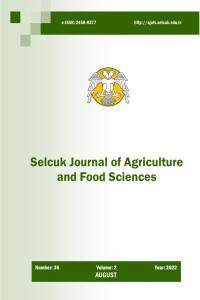Öz
Certainly, global warming is one of the most important environmental problems of mankind today. Increased human activities, especially in the last few decades, like burning fossil fuels, increasing CO2 emissions, deforestation, and other practices have exacerbated the global warming phenomenon. The increase in greenhouse gases leads to an increase in temperatures above the normal rate and this causes fires, droughts, sandstorms, high soil salinity, and fluctuations in precipitation. These changes in the environment affect not only humans but also all living organisms, including insects. Insects are the largest group of living organisms on earth. Therefore, one of the creatures that will be most affected by these changes is insects. Increasing temperatures, rising CO2 levels, and changing rainfall patterns may affect the interaction between plants and insects. For example; the development of insects may accelerate, insect pests and insect-borne diseases, the number of generations in a year and winter survival may increase, the geographical distribution may expand, biological control of the pests may decrease, and as a result of all these, economic losses in crops may increase. Global warming may also affect the migration of insects, in particular, butterflies of which about 600 species have migratory behavior. This may be due to several factors, including the loss of the habitats on which the larvae feed, the nectar resources and the deterioration of their winter habitats, the adaptability and productivity problems in their new habitats, the attack of natural enemies, the disruption of migration signals and the change in wind patterns. In addition, the migration of butterflies may increase with the effect of global warming. Moreover, an increase in temperatures can also cause changes in butterfly morphology, e.g., a reduction in wing size that reduced their flight activity. In this review, we discussed the impact of global warming on butterfly migration.
Anahtar Kelimeler
Ayrıntılar
| Birincil Dil | İngilizce |
|---|---|
| Konular | Bitki Bilimi |
| Bölüm | Araştırma Makalesi |
| Yazarlar | |
| Yayımlanma Tarihi | 30 Aralık 2022 |
| Gönderilme Tarihi | 8 Kasım 2022 |
| Yayımlandığı Sayı | Yıl 2022 Cilt: 36 Sayı: 4 |
Selcuk Journal of Agriculture and Food Sciences Creative Commons Atıf-GayriTicari 4.0 Uluslararası Lisansı (CC BY NC) ile lisanslanmıştır.


